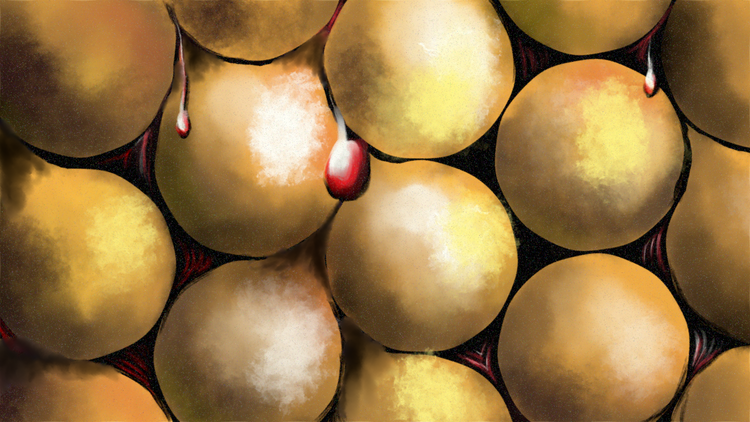
Running Commentary 9/5/2022
Hello,
It’s Labor Day again, which means that the Fall migration is just around the corner. This year, though, we’ll have the comment section. Feel free to mention what birds you see passing through.
Anyway...
Watching...
She-Hulk: Attorney at Law
The third episode was released last Thursday, bringing another cameo and an actual action scene. Here are my notes:

- Y’know the running criticism of Marvel stuff, where they start to have a heartfelt moment but then at the last minute they blink and tell a joke instead? That’s what this episode felt like to me. There was an interesting story to be told in Blonski’s trial, a story that was hinted at last season when he protested that the government had made him into the Abomination in the first place, that didn’t really get told here; instead, the trial scene was dominated by a slapstick scene of the jury panicking at Blonski’s transformation. I doubt this is the last we see of Emil Blonski in this show, though.
- The episode’s B-plot felt like a waste of time. It only barely tied into the A-plot and, more damningly for a comedy, it wasn’t funny. There are a couple of ways that it could have been funny: either make Dennis less malicious or less stupid. If he’s less malicious, then the situation he’s in is still absurd, but we’re happy to see him win his suit in the end. If he’s less stupid, then he might be able to realize that he’s being publicly humiliated and we could at least get something out of seeing him squirm. But the Dennis we got is both too malicious for us to root for and too stupid for us to see suffer; he’s an idiot boor who learns nothing and offers no laughs, and I sincerely hope this is the last we’ll see of him in this show.
- There’s more to whatever was going on between Wong and Blonski than was said in the trial; I think more will be revealed later on, though whether it’s revealed here or in some later project, I don’t know.
- Somehow I’ve actually heard of the Wrecking Crew before, and didn’t have to google who they were. This makes no sense given that I don’t read comics.
BattleBots
The final bracket to determine who would advance to the Golden Bolt championship saw a weird collection of bots face off, with Witch Doctor serving as the gatekeeper. Let’s take a look at the fights:
- PERFECT PHOENIX v SUBZERO - By rights Subzero should have won here. Subzero is a flipper, and Perfect Phoenix is unable to self-right or drive inverted. But Subzero simply never got a good flip in, instead seeing its weapon and armor plating get shredded. Subzero really needs to up their driving game going forward. Flipper bots can be formidable but they depend on a driver who is alert and quick to seize on opportunities. Subzero didn’t have that.
- OVERHAUL v BLACK DRAGON - Continuing our theme of bots not seizing on opportunities, here we saw Black Dragon, presented with Overhaul’s giant exposed wheels, focus their energies crawling under their opponent, all damage to Overhaul’s wheels seemingly accidental. Black Dragon took the win, as Overhaul simply had no capacity to meaningfully damage Black Dragon, but what should have been a decisive knockout was instead an agonizingly drawn-out battle of small hits.
- HIJINX v WHIPLASH - The third no-knockout fight in a row, Hijinx v Whiplash was, by contrast with the previous two, a great example of two bots who knew what they had to do to win a fight. Hijinx did well early on, keeping Whiplash at arm’s (tail’s?) length. But once Whiplash got past Hijinx’s weapons, it dominated the fight, impressing the judges enough to win a unanimous decision.
- GHOST RAPTOR v CAPTAIN SHREDDERATOR - Shredderator hasn’t fared well in the modern era of bots that can take a hit, so it got a lucky matchup against Ghost Raptor, the last fragile bot standing. Unfortunately, the Captain got outmaneuvered and spent the fight bouncing between Ghost Raptor’s wedge and their longtime nemesis, the arena wall. Ghost Raptor’s weapon broke off, but otherwise they were essentially unscathed, and they took a well-deserved win
- PERFECT PHOENIX v BLACK DRAGON - Perfect Phoenix lost a weapon motor in their fight with Subzero, and were unable to make needed repairs in time for their next fight. Black Dragon faced a stunted blade, and delivered huge, flipping blows essentially unopposed, culminating in the first knockout of the night.
- WHIPLASH v GHOST RAPTOR - Whiplash isn’t really a damage-dealer, so the fragile Ghost Raptor had a bit of a chance here. But Whiplash is able to very precisely position their opponent, and was able to very precisely position Ghost Raptor upside down such that they couldn’t self-right. This fight was Whiplash at its best.
- WHIPLASH v BLACK DRAGON - One of the most tactical bots in the field took on one of the least. Whiplash made the first attack, and kept Black Dragon inverted for the first half of the fight, and kept control of the fight for the full three minutes.
- WHIPLASH v WITCH DOCTOR - This fight was a faceoff between probably the two best drivers in BattleBots: Matty Vazquez and Mike Gellatly. Whiplash wasn’t able to dominate the fight the way it did those earlier in the night. Witch Doctor won by keeping patient and waiting for an opportunity to deliver a big hit to knock Whiplash out.
Reading...
Skunkworks

Ben R. Rich was an acclaimed aviation engineer who spent his career working on secret projects for Lockheed (now Lockheed-Martin following the company’s merger with another defense contractor). The division Rich worked in, and later oversaw, was informally called the “Skunk Works”, after a ramshackle distillery in the comic strip “Lil’ Abner”, and hte fact that the division was originally headquartered next to a foul-smelling chemical plant. The term also serves as the title of Rich’s memoir.
My most immediate thought on Skunk Works is that it’s weirdly sequenced. It’s mostly told in chronological order, except that it starts with Rich’s accounts of the development of the F-117A stealth fighter (pictured on the cover), which largely took place when Rich ran the Skunk Works. After the reader is told of the stealth fighter’s successful performance in the Gulf War and of Rich’s retirement shortly after, the book flashes back to when Rich joined the Skunk Works, working under head engineer Clarence “Kelly” Johnson to develop the U-2 spy plane, and later the SR-71 Blackhawk. (An interesting anecdote from the book: originally, the Blackhawk was designated the “RS-71”, but President Lyndon Johnson got the letters turned around when giving a speech. Rather than correct the Commander-in-Chief, the Air Force re-designated the plane, leaving Lockheed to re-paint the designation marked under the plane’s wings.) The book then works forward to where it began. I’m not sure if the book was always like this in the early drafts; I suspect not, given that things like who Kelly Johnson was and what the Skunk Works was weren’t really laid out in the first chapters, but were detailed later, almost like the book was originally written chronologically.
Rich co-wrote this book with Leo Janos, who also co-authored test pilot Chuck Yeager’s autobiography (a fact mentioned everywhere Janos’s name appears). I’m not sure which of them were responsible for gathering and including the “Other Voices” passages, accounts from other Lockheed employees, test pilots, military officers, and government officials that are interspersed throughout the book, but it was a good move, making the book a more well-rounded history of stealth aviation than it would have been if Rich had been the only source. That said, the book is still mainly Rich’s, and is full of his editorializing about the Navy, about the CIA, about the Carter administration, about the Reagan administration, about CNN, and about Lockheed’s competitors. The final chapter is entirely dedicated to Rich’s thoughts on how military aviation ought to be developed in the future. So don’t come to this book expecting a comprehensive, unslanted history.
The rather confounding and contract-negotiation-heavy first chapters aside, I enjoyed reading this book. I’m not really all that interested in military aviation generally, but I’m always up for well-told accounts of engineering and technological innovation, and this book featured a lot of those. I don’t know that I’d say this is a book for everybody, but if the premise seems enticing to you, I’d say the book delivers on what it promises. 8/10

Bird of the Week
This week we’re featuring another parid. The Tufted Titmouse is a woodland species found in a growing range throughout the eastern United States. In the southwestern reach of their range (along the eastern edge of the Edwards plateau in Texas), they will hybridize with the closely related black-crested titmouse; from 1983 to 2002 the black-crested was considered a subspecies of the tufted. It is thought that the two species diverged after becoming isolated from one another, and are only recently becoming reacquainted as their ranges expand to meet once again. Titmice do not migrate seasonally and will visit backyard feeders year-round.
An adult tufted titmouse measures about six inches long; while not a large bird it is the largest parid in North America (though they are more slender in build than their cousins the chickadees, which may appear slightly bigger). As is typical of parids, both sexes look alike and their plumage does not vary between the breeding and non-breeding seasons. Adults have black foreheads and white bellies; juveniles are overall a more even gray color.
As I mentioned, the tufted titmouse’s range is expanding. Typically these birds find their homes in the basins of the Ohio and Mississippi rivers, but the last fifty years have seen them start to breed beyond this core range, especially north into the Great Lakes region. The total population of tufted titmice is estimated at eight million adults, a number which is slowly increasing. Much of this expansion is due to human activity providing food and shelter in more areas. Titmice eat a widely varied diet of seeds and insects; during the summer they are especially fond of caterpillars.
The name “tufted titmouse” is unhelpful, given that all titmice sport similar small crests. The name titmouse derives from the Old English “tit māse”, a phrase meaning “small bird” and originally referring to parids found in Europe. Today, though, “titmouse” is only formally used to refer to members of the genus Baeolophus, all of which are North American. The tufted titmouse is Baeolophus bicolor, the genus name meaning “small-crested” in Greek and the species name referencing its two-tone coloring of gray with rusty patches under the wing

Curation Links
The Degradation Drug | Carl Elliott, The American Scholar
A report on the (uncommon, though how uncommon is unclear) cases of off-label prescription of psychiatric medications, known as dopamine agonists, leading patients to bouts of bizarre, uninhibited behavior. Some became bold artists, others obsessive criminals, before reverting to the normal people they were before upon ceasing taking the drugs. Can such a person be held responsible for their illegal actions? And if not, can such a person be credited for their creativity?
I Went to Trash School | Clio Chang, Curbed
An inside look at the lives of New York City’s trash collectors. It’s well-paid but dangerous work, and trash collectors are seen as disgusting in an immediate sense, but are moreso respected for the crucial service they provide. An early lesson each worker learns early: to keep aware of the juice.
How America Embraced Aspics With Threatening Auras | Diana Hubbell, Atlas Obscura
Weird gelatin molds filled with meats and other savory items are mostly associated with the cuisine of mid-20th-century America, but their roots go back much further. In fact, it could be argued that Jello, derived as it is from the connective tissues left after a carcass has been stripped of its meat, is less weird embedded with bits of steak and vegetables than dyed candy colors and made to taste of fruit.
Heartless | Haukur Björgvinsson, Short of the Week
[FICTION] In an isolated northern community, all adults must accept being matched with a new partner every seven years, or else they must face The Egg. (Dialog in Icelandic with English subtitles, 15 minutes)
See the full archive of curations on Notion






Member Commentary